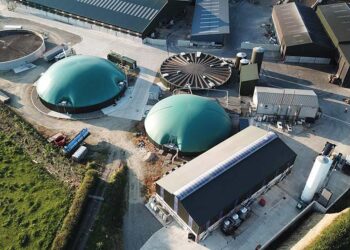Despite its high price, cilantro remains essential in Mexico City’s taquerías, such as Tacos la Chula in Colonia Escandón.
Mexico City’s recent drought turned cilantro into a luxury good for the city’s taqueros. It’s unlikely to be the last time.
A recent dry spell has taken a toll on Mexico City’s taco stands. Over the course of this spring, as May turned to June without any sign of the usual early-summer rains, a simple ingredient reached extravagant prices. Maricela, at Tacos Arturo in the city’s Barrio Santa Lucía neighborhood, usually buys cilantro by the 5-kilo bunch for 150 pesos ($8.40). Now, a single kilo costs her 300 pesos. Within just a few months, the herb, typically a minor item on a business’s budget, has become a luxury good. She rations out the leaves on tacos, and to restock, she places an advance order with her produce vendor, who now only supplies cilantro by special request.
Gerardo Cerros at nearby Tacos Kenia saw the cost of five-kilo bunches of cilantro increase tenfold: from 80 or 100 pesos to 1,000 pesos — almost $55 for a week’s supply of the ingredient. “They say the price is going to go down, but I don’t know when,” he says. A tourist may not notice that their street taco is less green than usual, but for denizens of the capital, that fresh, peppery kick puts a necessary touch on a suadero or barbacoa taco. Omitting the garnish is unthinkable. “I use a little bit less, but without cilantro, it’s not the same.”
Mexico has seen record-breaking temperatures every month since October 2023. Since March, according to scientists from the World Weather Attribution, a global climate study group, heat has reached dangerous levels. Consecutive years of drought accompany the heat wave. Most years, the wet season in central Mexico begins in late May. Rain falls predictably every afternoon through September, and farmers time their sowing to coincide with the first downpours. This year, though, the skies remained clear until mid-June.
A taco from Taquería Parque Luna in Colonia Juárez.
Cilantro happens to be one of the more heat-sensitive crops in Mexican cuisine. Consuelo Bonfil, a biologist at the National Autonomous University of Mexico, noticed the phenomenon play out on a small scale in her home garden this spring. While parsley and rosemary survived the high temperatures, the cilantro scorched and died. The herb’s fine leaves and intensive water demand make it particularly sensitive to heat and drought.
Mexico City has faced chronic water shortages for years, largely due to lack of maintenance of existing infrastructure. For Emmanuel Balderas, who prepares tortas at Las Tortochas in the Santa María la Ribera neighborhood, water cutoffs in the capital add another task to the workday. Las Tortochas receives running water only until 1 p.m., so Balderas spends the morning filling up buckets to use for dishwashing. On top of that, the heat wave forced him to make his own ice, instead of purchasing it: As residents of the capital sought to weather the unseasonal temperatures, the city’s ice suppliers couldn’t keep up with demand. Convenience stores limited purchases to just one or two bags, so Balderas began freezing his own to keep up with the demand for frosty mojitos — whose delicate mint garnishes also started arriving from the market withered by the heat.
But the lack of cilantro is particularly emblematic for the capital’s food scene. Mexico City eats on the street. The street taco is the quintessential meal for workers: cheap, fast and ubiquitous, meat in a tortilla topped with a sprinkling of onion and cilantro, distributed with the taquero’s distinctive snap of the wrist that evokes both style and assembly-line efficiency.
Cilantro came to Mesoamerica in the form of coriander seeds with the Spanish conquest, but, as food historian Yolanda García explains, its spicy, bright-flavored leaves only grew popular in central Mexican cuisine in the 20th century. Nuns cultivated the fresh herb in convent gardens alongside parsley, oregano, and rosemary, all used in western European herbal medicine. Known for its antibacterial purposes, it became ubiquitous with the popularity of street tacos in 1930s Mexico City. Today taqueros and diners in the capital can hardly imagine a taco without it. When asked if she could replace cilantro with parsley, Itzel, a taquera in the western neighborhood of Barrio Santa Lucía, just laughed.
Alan García of the family-owned Kekas Paco, also in Barrio Santa Lucía, first noticed the spike in prices in early May, when a 5-kilo bunch at the Central de Abasto, the city’s central food distribution market, went for 500 pesos. Rather than go without, he opts to add more onion and reduce the portions of the green. “It gives the taco its finishing touch,” he said. “People ask for flavor, and the flavor is the cilantro.”
At Taqueria Arturo, the cilantro spike has forced Maricela to seek out other cost-cutting measures. “The increase was excessive, and we can’t increase our prices,” she says. Instead of buying by the bunch, she now purchases just a kilo, and she rations it out. “We can’t say that we don’t have cilantro because it’s too expensive. The customers ask for it.”
The short explanation for the shortage — delayed rainfall and a heat wave that caused cilantro crops to wither — isn’t the whole picture. The drought isn’t from a lack of water per se, but the distribution of it. Thirty-nine percent of Mexico’s food comes from producers who farm less than five hectares, but policies that prioritize water usage for industry mean that the small-scale farmers that historically provide most of the country’s food supply take the hit from adverse weather.
“Water is the most important ingredient,” says Arturo García, an agronomist who works with farmers in the state of Guerrero. When it comes to small-scale farmers, García points out two problems: Producers don’t have access to watering technologies and training. As a result, they largely rely on rainfall, more erratic each year, to nourish their crops. The degradation of the soil, lack of water, and lack of support of the countryside for productive technologies decrease crops’ productivity. Small-scale farmers increasingly grow crops for subsistence rather than for the market.
Under the current president, Andrés Manuel López Obrador, agricultural subsidies have been shifted to reach small farmers. Before, a lot was distributed to a few: Eighty percent of subsidies went to large producers, and 80 percent of producers received 20 percent of the resources. Current policies distribute resources more widely, but in small quantities: A corn producer receives 6,000 pesos ($330) a year, regardless of the size of their fields. Producers receive less than 10 percent of their crops’ final market cost. When they suffer losses — like cilantro crops that wither under the sun before harvest — prices go up for consumers.
Large-scale farmers, on the other hand, don’t depend on precipitation to keep their crops healthy. They irrigate their fields thanks to water concessions, through which the National Water Commission grants them the right to a certain quantity of water. They only pay once they use more than the conceded amount, measured in the trillions of square meters.
Agriculture uses more water than any other industry in Mexico, including the much-maligned beer, soda, and mining industries. Gonzalo Hatch Kuri, a geographer specialized in water systems at Mexico’s National Autonomous University, explains that the concession system is a form of agricultural subsidy: “Some say it’s important for Mexico’s food sovereignty, but it’s also a business” — one that benefits, for instance, the producers of avocados exported to the U.S. for the Super Bowl.
Rising global temperatures, paired with policies that prioritize water for profit rather than well-being, will continue to shape our foodways for the foreseeable future. So how can the unique flavor profile of Mexico City’s taco stands endure climate change? In addition to policies that distribute water more equitably, Jonathan Fletes, the founder of the Sustainable Agroecological Food Network (RAAS by its initials in Spanish) in Mexico City, proposes a shift away from industrial agricultural techniques. The Green Revolution of the 1960s promoted monocrops grown on bare soil, which makes crops far more vulnerable to changes in rainfall. Direct sun exposure kills the biodiversity beneath the surface, which in turn depletes the water supply. “Fungi suck up water. Having mycorrhiza in the soil is like having an underground water source,” he says. Agroforestry systems — trees planted alongside crops — also help the earth retain moisture.
Cilantro at the Becerra Market, Tacubaya.
Ancestral farming practices provide another key to sustainable eating. Historically, farmers in Mesoamerica have allowed wild leafy greens, known as quelites, to thrive alongside corn, beans, and squash, all grown together on the same fields. A cornerstone of the Mesoamerican diet long before colonization, quelites have all but vanished from urban diets in the last 15 years. Food historian García notes that one variety of wild green, tequelite, tastes similar to cilantro, perhaps predating the contemporary uses of the herb. Recovering such crops would also require greater support for small farmers.
It’s not the first time that climate changes have affected how Mesoamericans eat. Hundreds of years ago, Indigenous historian Fernando Alvarado Tezozómoc chronicled a 14th-century heat wave and dry spell that did away with chia and corn seeds. “It’s similar to what we’re experiencing today,” says García. “Over the course of history, climate changes have affected the population’s consumption.”
When the rains finally began in June, they sparked concerns about sensitive crops drowning from the sudden deluge. For the time being, taqueros in the capital continue rationing out the herb to keep their customers happy. As Alan García of Kekas Paco insists, “A taco without cilantro isn’t a taco.”
Madeleine Wattenbarger is a freelance writer and journalist in Mexico City covering topics related to human rights, migration, politics, gender, and cities.
Eliana Gilet is a journalist in Mexico City.
Axel Hernández is a photographer in Mexico City.














